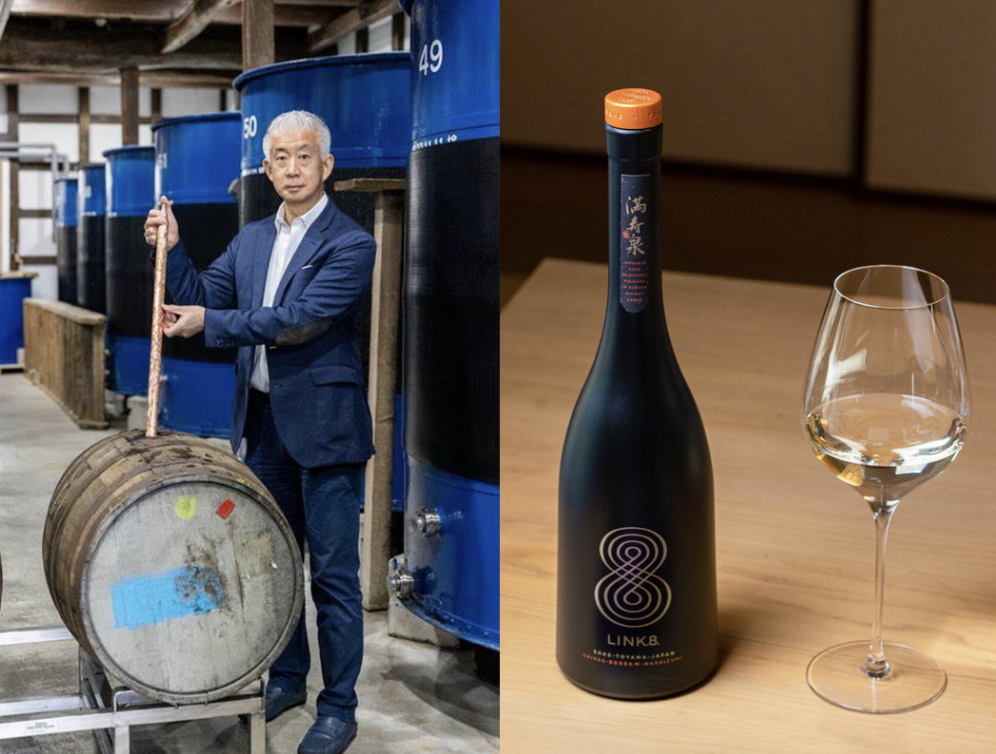In early April, I returned to Shanghai, and I had the opportunity to meet up with my former neighbor and food enthusiast, Mr. Guanjia, at Fu He Hui. In my eyes, he is the person who knows Fu He Hui the best, and dining with him brings me great joy.
It’s been almost ten years since the opening of Fu He Hui, nestled among tree-lined avenues at the former French Concession of Shanghai, a hugely sought-after historic district abundant with quaint residential buildings during the 1920s. The name “Fu He Hui” comes from the owner – Mr. Fang ‘s understanding of happiness (Fu, 福) and wisdom (Hui, 慧): “The process of pursuing happiness leads to wisdom and the pathway to wisdom is accompanied by happiness”.
The restaurant décor features a harmonious combination of stone and wood elements, creating a Zen-inspired sense of space accentuated by a lingering fragrance of agarwood. Together with attentive and thoughtful service, this is a sanctuary in the heart of the metropolis for you to unwind and relax.

Chef Toni Lu was born and raised in Shanghai. He gained experience in several high-end Cantonese restaurants before rising to international prominence as the culinary mastermind behind Shanghai’s finest independent Chinese restaurants Fu1039, Fu1088, Fu1015 and vegetarian restaurant Fu He Hui which was opened in 2014. Renowned for his deep knowledge and mastery of traditional Chinese cuisines updated with an enticing touch of modernity, Chef Lu has garnered numerous culinary accolades.
Fu He Hui prides itself on creating unique dishes that incorporate seasonal ingredients, ensuring that diners can savour exclusive culinary delights available only during that particular season. This spring, one of the highlights of the menu is the artful pairing of dishes with Chinese teas, enhancing the overall dining experience.
Tea pairing is also a highlight of the set menus, each having 4 different kinds of tea to complement the dishes. Diners can experience the charm of Chinese tea while enjoying Fu He Hui’s dainty dishes.



The appetizer is inspired by a Chinese dessert Mango Pomelo Sago. Diced mango, honey pomelo, and sago pearls are placed on a bed of incredibly fresh and sweet Hainan mango. It can also be enjoyed as a dessert after the meal.
The next dish features Sichuan green celtuce, Yunnan termite mushroom, and shuhuacai (literally “tree flower vegetable”), which is a wild, edible evergreen shrub that grows on high-altitude trees endemic to Shangri-La in Yunnan. It’s my first time trying the plant and it was refreshing and pleasant.

 Mango Pomelo Sago/Green Celtuce
Mango Pomelo Sago/Green Celtuce
The Chinese yam dish is a vegetarian version of Ge Zha, a traditional street snack and later evolved into a cooking technique where any thick liquid is solidified so that it can be deep-fried. Chinese yam from Pingyao, Shanxi province, first-harvest seaweed, and coconut milk sauce are made into the filling. The outside is coated with pistachio and powdered seaweed. The neatly fried Ge Zha has a smooth and delicate texture.
The Anji Spring Bamboo Shoots has a complex cooking process. The bamboo shoots are brought to boil in spring water, peeled off the outer skin, air dried for 12 hours and lightly deep fried before serving. Dried tofu skin is mixed with bamboo skin to make the square-shaped pattern. The peeled off bamboo skin can also be utilised to make a broth or sauce to be enjoyed together. It is one of the most impressive dishes on the spring menu.


 Chinese Yam/Bamboo Shoots
Chinese Yam/Bamboo Shoots
Beetroot from Heilongjiang province is smoked and grilled with a sauce of red chili pepper, curry and mountain pepper oil. This rich, smoky, and delicious sauce tastes much like Spanish romesco sauce.
Next up is transparent snow swallow and red matsutake drizzled with veggie broth and garnished with green mung beans. Snow swallow is also known as gum tragacanth as it is a vegetable gum produced as an exudate by trees. It is a valuable substance with a long history of consumption by humans.


 Beetroot/Snow Swallow
Beetroot/Snow Swallow
We ordered mapo tofu, egg foo yong (Cantonese-style omelet) and siu mai stuffed with diced bamboo shoots. The mapo tofu was originally a secret menu item, but now it has become a must-order dish for everyone. I couldn’t resist ordering the rice too. The king oyster mushroom is diced to add flavour and texture. Very delicious. This time they have a special green mapo tofu dish featuring organic soybeans from Shandong province. Everything from sourcing the ingredients to the final production is done by the restaurant team. The sauce is made with green pepper and rattan pepper, and soybeans are layered at the bottom for a richer mouthfeel. The smooth texture and slightly spicy flavour constitute this heart-winning dish.




 Mapo Tofu/Egg Foo Yong(Cantonese-style omelet)/Siu Mai/Green Mapo Tofu
Mapo Tofu/Egg Foo Yong(Cantonese-style omelet)/Siu Mai/Green Mapo Tofu
Next is a simple yet fine dish comprising of baby mustard green, tree tomato and pickled papaya topped with snow fungus. All the ingredients for this dish are sourced from Yunnan.
The double-coloured rice with shiitake mushroom is inspired by a breakfast fare popular in Wenzhou, Zhejiang province – steamed glutinous rice topped with crushed fried dough stick and a savoury meat broth. Here we have in the steamer: black rice and white glutinous rice from Yunnan. Mixed with broccoli, shiitake mushroom and spring onion crisps, the result is full-flavoured, healthy and moreish. Chef Lu has a nickname of Panda, so we “inventively” call this dish Panda Rice.



 Baby Mustard Green/Shiitake Mushroom/Strawberries
Baby Mustard Green/Shiitake Mushroom/Strawberries
Inspired by a traditional Fujian sweet peanut soup, the Peanut dessert is an ice cream made with Yunnan Qicai peanuts (colourful-skinned peanuts) and betelnut taro, draped with almond tea, and sprinkled with powdered Mengding Ganlu tea leaf, a young early spring green tea that has notes of orchid, fruit and grass.
The experience finishes with (petit four?) Qingtuan, a green-coloured glutinous rice dumpling filled with sweet red bean paste, and a snack typically consumed around the time of the Qingming Festival (April 4 or 5). Fe He Hui’s Qingtuan is filled with a mixture of pumpkin seeds, white sesame seeds, pine nuts, walnuts and olive kernels, making them extremely popular during the festival. Placing the order as early as possible is recommended as the demand is high!


 Peanut/Qingtuan
Peanut/Qingtuan
Fu He Hui believes in letting everyday ingredients, not just extremely rare and unusual fare, shine through masterful treatment. For the past decade, Fu He Hui has never repeated a dish in its annual renewal of the menu. It is no coincidence that they have successfully stayed on the list of Asia’s 50 Best Restaurants year after year.










